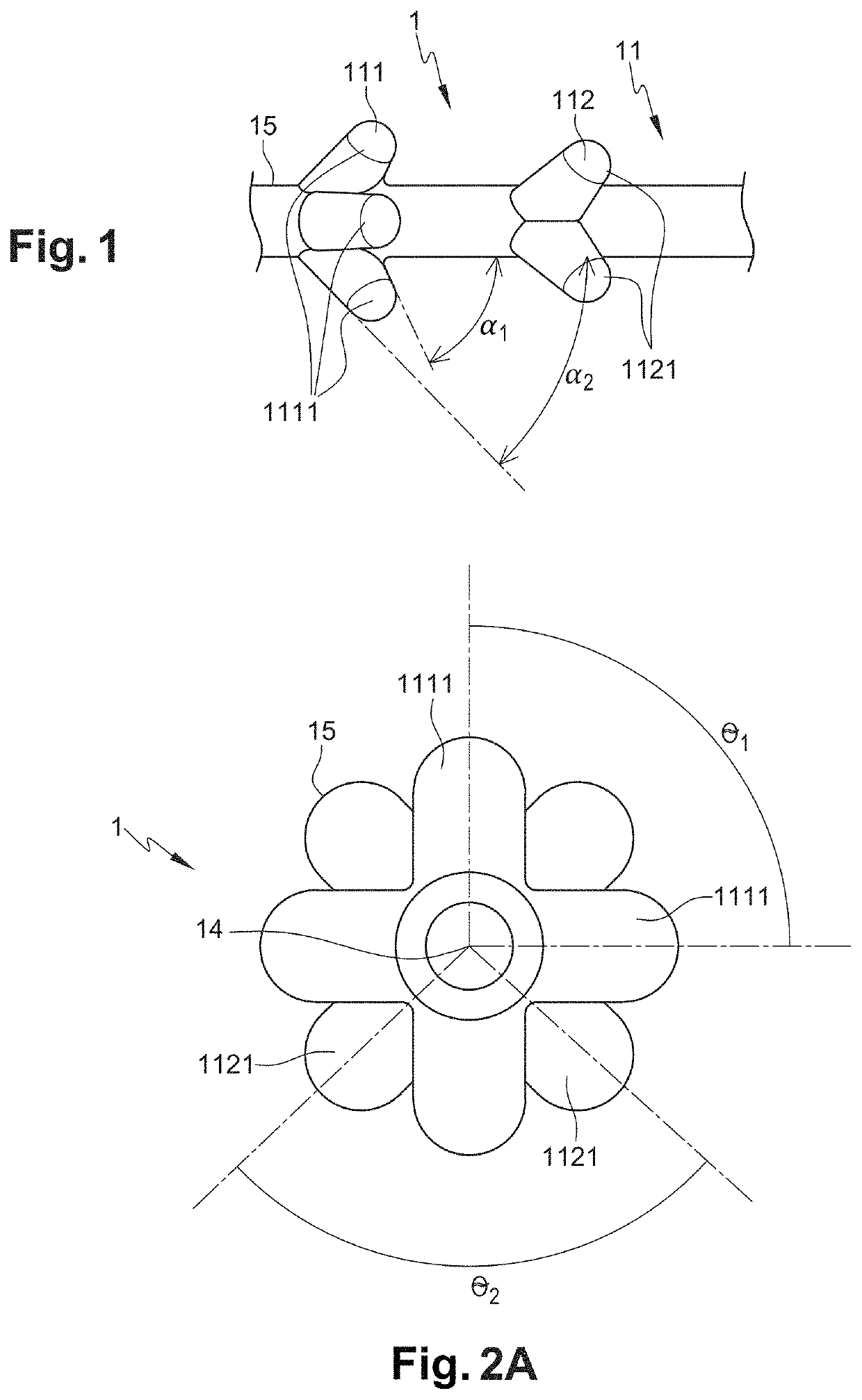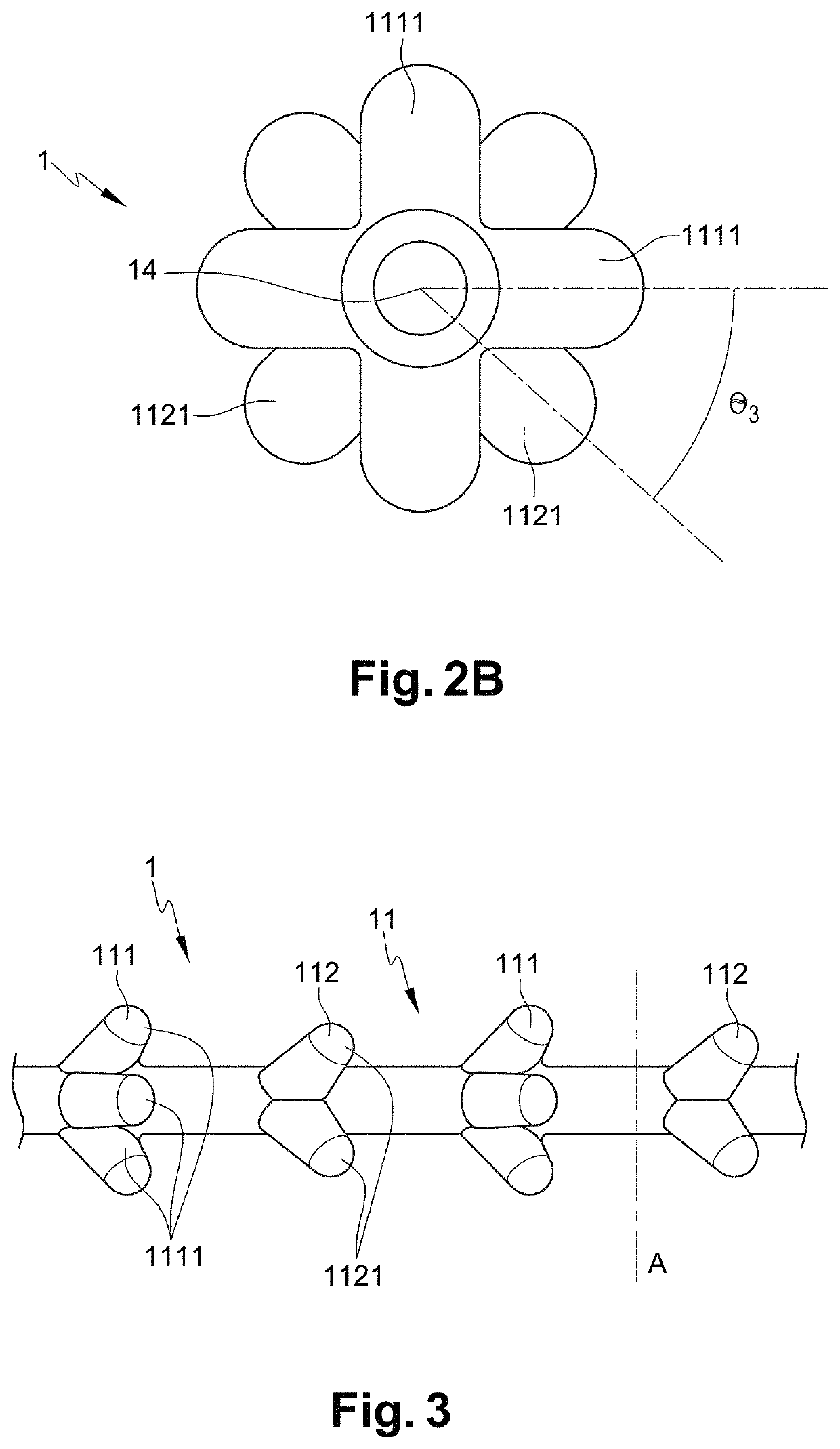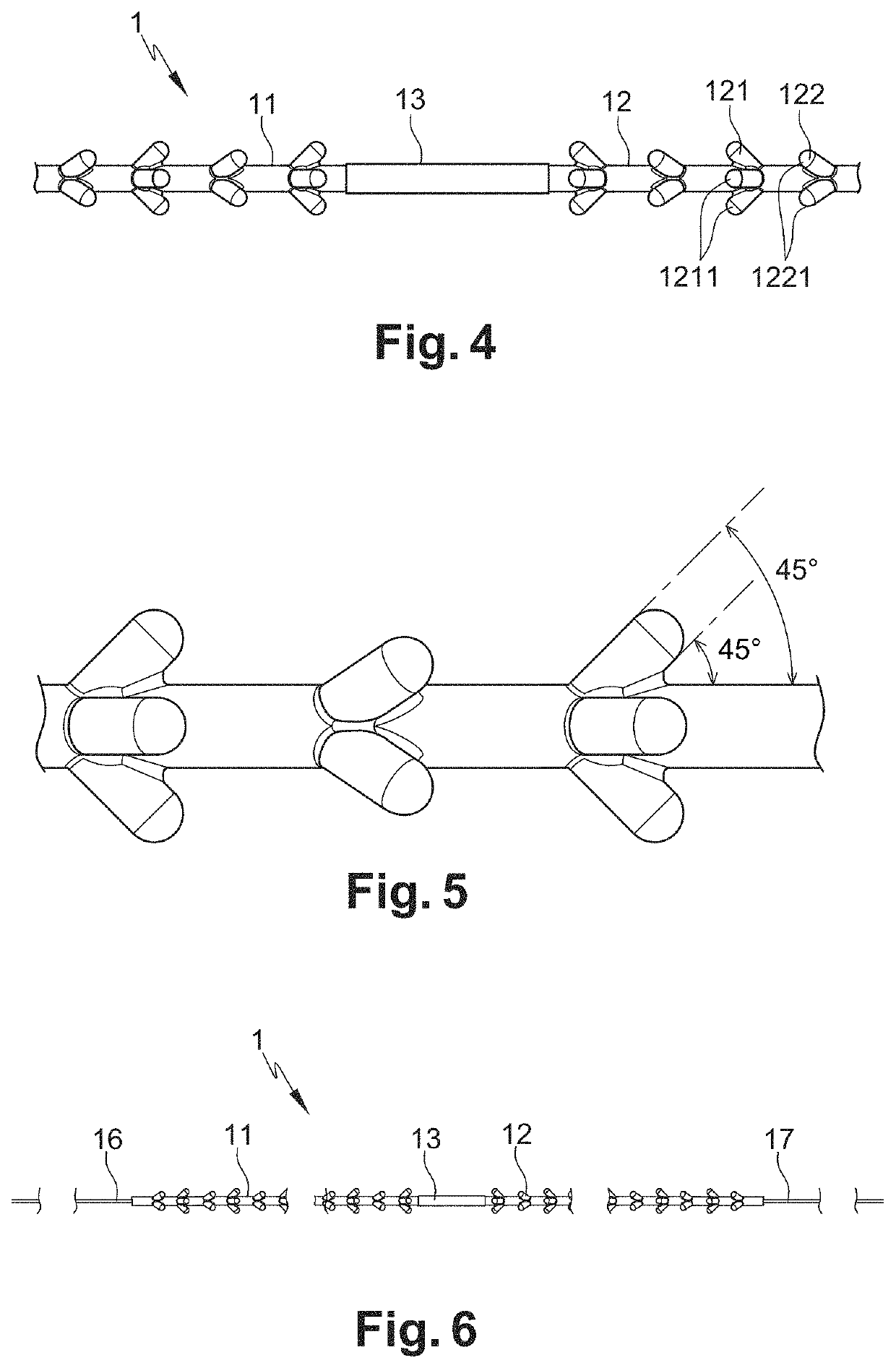Surgical thread
a surgical and thread technology, applied in the field of surgical threads, can solve the problems of frequent refusal of surgical techniques by patients, scars left along the various incisions, irremediable damage to the subcutaneous tissue,
- Summary
- Abstract
- Description
- Claims
- Application Information
AI Technical Summary
Benefits of technology
Problems solved by technology
Method used
Image
Examples
examples
Materials and Methods
Materials
[0113]Two types of surgical threads are used: the first type of thread (illustrated in FIG. 3) comprises conical barbs and the second type of thread comprises cylindrical barbs (illustrated in FIG. 5).
Methods
[0114]The purpose of these tests is to compare the maximum strength value of each type of thread through animal tissue. The thread is inserted into an animal muscle tissue sample using a needle. The muscle tissue sample is then fixed to the movable part of a traction bench using a holding support. The end of the thread is fixed to a self-closing grappler so as to pull in the opposite direction of the barbs. The speed of the traction bench is set to 30 mm / min. The maximum force measured after the thread has passed completely through the animal tissue is noted.
[0115]The tests were carried out on pork fillet in order to obtain the most homogeneous insertion medium possible and in order to remove the risks of having the presence of a nerve or a differen...
PUM
 Login to View More
Login to View More Abstract
Description
Claims
Application Information
 Login to View More
Login to View More - R&D
- Intellectual Property
- Life Sciences
- Materials
- Tech Scout
- Unparalleled Data Quality
- Higher Quality Content
- 60% Fewer Hallucinations
Browse by: Latest US Patents, China's latest patents, Technical Efficacy Thesaurus, Application Domain, Technology Topic, Popular Technical Reports.
© 2025 PatSnap. All rights reserved.Legal|Privacy policy|Modern Slavery Act Transparency Statement|Sitemap|About US| Contact US: help@patsnap.com



